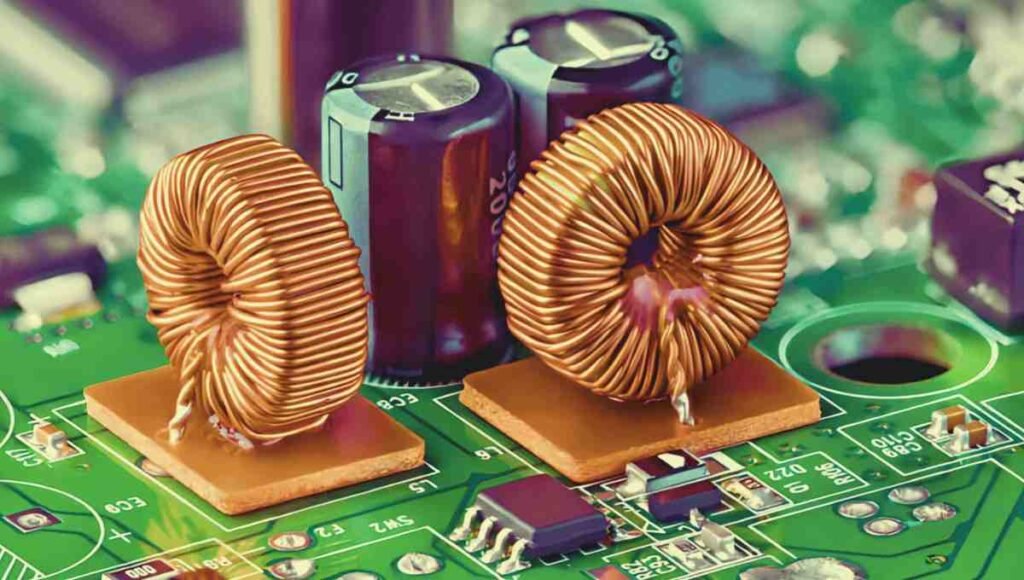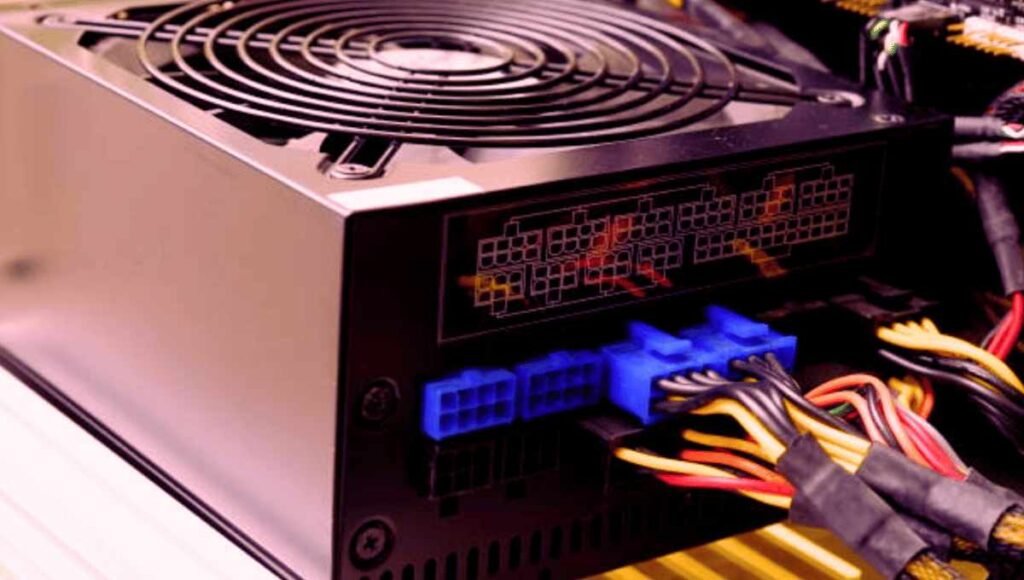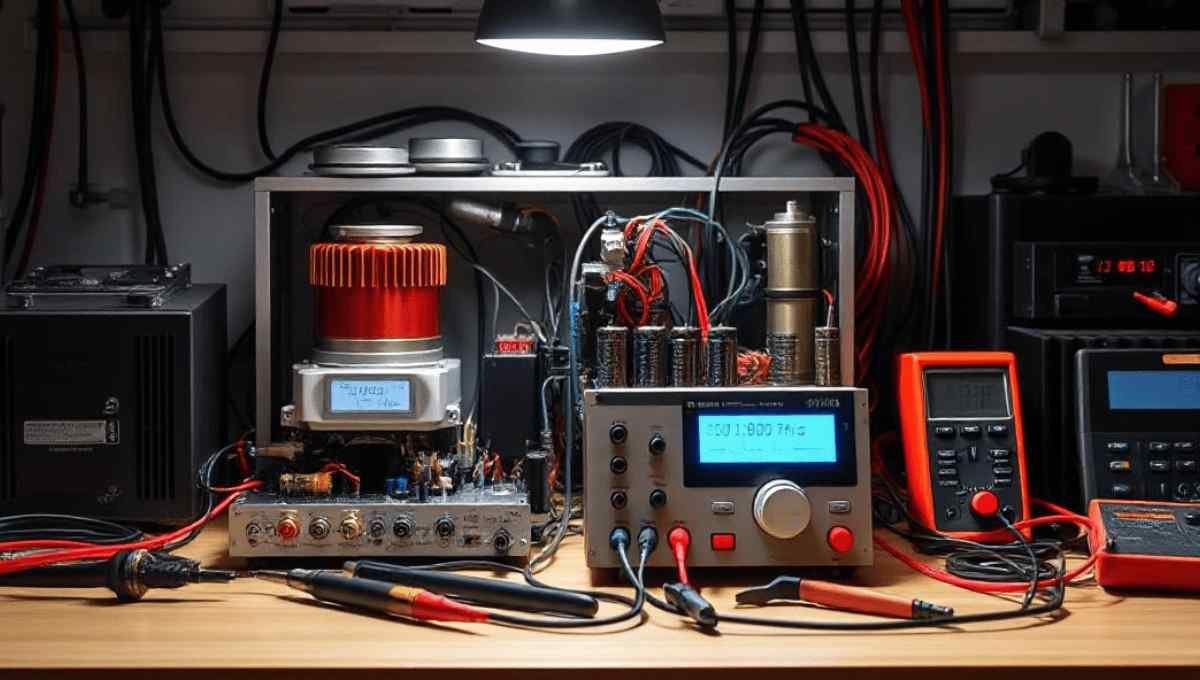A power supply 200W 36V 12V circuit diagram is more than just a technical sketch; it’s a roadmap to efficient power distribution for devices with varying voltage needs. This circuit ensures that sensitive electronics receive the precise power required to function optimally, combining reliability and flexibility. Whether you’re an engineer working on industrial systems or a DIY enthusiast building a project, understanding this circuit design is essential. In this guide, we’ll break down its components, explain its operation, and explore its applications, so you can confidently create or troubleshoot circuits.
The core function is to step down or regulate power from a primary source, such as a wall outlet or battery, to specific output voltages: 36V and 12V. This makes it suitable for devices with different power requirements.
Table of Contents
Understanding the Basics of a 200W 36V 12V Power Supply
A power supply 200W 36V 12V circuit diagram illustrates how to convert electrical energy into usable, stable outputs. This design is key in applications where precision and reliability are necessary. Breaking down input power into 36V and 12V outputs ensures devices operate safely and efficiently across various environments.
Key Components and Their Roles in the Circuit
Every power supply 200W 36V 12V circuit diagram consists of specific parts working together to ensure proper operation. Below are the primary components and their purposes:

- Transformer: The transformer reduces high input voltages to a manageable level suitable for further processing. It provides electrical isolation, enhancing safety.
- Rectifier: The rectifier converts alternating current (AC) from the transformer into direct current (DC), which is essential for powering electronic devices.
- Voltage Regulators: Regulators maintain steady 36V and 12V outputs, ensuring connected devices receive a consistent power supply regardless of input fluctuations.
- Capacitors: Capacitors smooth out variations in DC voltage, removing ripples and providing a clean, stable power output.
- Resistors: Resistors control current flow, protecting sensitive components by limiting excessive current that could cause damage.
Each part works together to ensure efficient and reliable operation.
Step-by-Step Functionality of the Circuit
The operation of a power supply 200W 36V 12V circuit diagram follows a structured process:
- Input Power: Alternating current enters the circuit through the input and is passed to the transformer.
- Voltage Transformation: The transformer reduces the voltage to a safer, usable level, preparing it for conversion to DC.
- Rectification: The rectifier changes AC to pulsating DC, forming the base for smooth, stable power.
- Smoothing: Capacitors remove voltage ripples, ensuring the DC output is steady and reliable.
- Voltage Regulation: Regulators refine the DC to the required levels—36V and 12V—perfect for the devices relying on these outputs.
This process ensures stable output for connected devices.
Advantages of Adopting a 200W 36V 12V Power Supply
A power supply 200W 36V 12V circuit diagram offers several compelling benefits:
- Versatility: It supports devices needing both 36V and 12V, making it ideal for multi-device setups.
- Efficiency: By minimizing power loss, the circuit ensures maximum energy is utilized effectively.
- Compact Design: The integration of components into a single layout saves space, enabling use in compact systems.
- Stability: It delivers consistent voltage, which is crucial for sensitive electronics to function without interruption.
These advantages make it a go-to choice for many engineers and hobbyists.
Practical Applications Across Industries
A power supply 200W 36V 12V circuit diagram is used in:
- Industrial Equipment: It powers tools, machines, and control systems, ensuring uninterrupted operations.
- Automotive Applications: In vehicles, it supports lighting, infotainment, and auxiliary functions.
- Home Electronics: It supplies power to routers, chargers, and similar household devices.
- Renewable Energy Systems: It integrates into solar setups and battery management systems, improving energy utilization.
This broad application underscores its importance in diverse fields.
Design Challenges and Solutions
Designing a power supply 200W 36V 12V circuit diagram involves overcoming several challenges:
- Heat Management: Overheating can degrade performance. Adding heat sinks improves heat dissipation, keeping components cool.
- Voltage Fluctuations: Capacitors and regulators are necessary to stabilize voltage output, ensuring reliability under variable loads.
- Component Sizing: Choosing components with proper ratings prevents overloading and enhances safety and efficiency.
Adhering to these guidelines ensures efficient and safe operation.
Pro Tips for Crafting an Efficient Circuit
To build a reliable power supply 200W 36V 12V circuit diagram, follow these tips:
- Select components with high tolerances to handle voltage spikes.
- Keep connections short to minimize power loss.
- Use a PCB layout that optimizes heat dissipation.
- Test the circuit with a load to verify stability and performance.
These steps help improve efficiency and reliability.
Troubleshooting Common Issues in Circuit Design
Here’s how to address common problems:

- Overheating: Inspect heat sinks and replace faulty components to restore proper cooling.
- Unstable Voltage: Verify the condition of capacitors and regulators, replacing damaged parts if needed.
- No Output Power: Ensure all connections are secure and components are correctly installed and functional.
Regular testing and maintenance can prevent major failures.
Future Innovations in Power Supply Design
Advances in power electronics are shaping the future of power supply design.
- GaN and SiC Technologies: These materials enable higher efficiency and more compact power supplies.
- Smart Monitoring Systems: Real-time diagnostics improve reliability and simplify maintenance.
- Improved Thermal Management: New materials and designs reduce heat buildup, prolonging component life.
These trends ensure power supplies remain efficient, reliable, and adaptable to evolving demands.
Conclusion
A power supply 200W 36V 12V circuit diagram serves as a critical blueprint for achieving stable and efficient power conversion. Understanding the key components like transformers, rectifiers, and regulators is essential to building a functional and reliable circuit. These diagrams find use in a wide array of applications, from industrial equipment to home electronics, due to their versatility and efficiency.
By addressing challenges such as heat management and voltage stability and incorporating best practices like optimal component selection and layout design, users can ensure robust performance. With continuous advancements in power electronics, these circuits are becoming more efficient, compact, and smarter, paving the way for future innovations.
In summary, mastering this circuit design improves power delivery and enhances connected devices’ functionality, making it an invaluable skill for engineers and enthusiasts alike.
FAQ’s
What Is a Power Supply 200W 36V 12V Circuit Diagram?
A power supply 200W 36V 12V circuit diagram is a schematic showing how to convert input power into stable 36V and 12V outputs. It illustrates the arrangement of components like transformers, rectifiers, and regulators to ensure efficient and reliable power delivery.
What Is the Purpose of a Power Supply 200W 36V 12V Circuit Diagram?
The purpose of a power supply 200W 36V 12V circuit diagram is to provide consistent and stable voltage levels for devices with different power requirements, ensuring optimal performance and protecting sensitive electronics.
Which ICs Are Commonly Used in a Power Supply 200W 36V 12V Circuit Diagram?
Common ICs in a power supply 200W 36V 12V circuit diagram include the LM317 for adjustable voltage regulation and the 7812 for fixed 12V outputs. These ICs ensure precise voltage control and stability.
What Are the Key Challenges in Designing a Power Supply 200W 36V 12V Circuit Diagram?
Challenges in designing a power supply 200W 36V 12V circuit diagram include managing heat, ensuring voltage stability, and selecting components with appropriate ratings for current and voltage demands to ensure efficiency and safety.
Can a Power Supply 200W 36V 12V Circuit Diagram Handle Fluctuating Loads?
A power supply 200W 36V 12V circuit diagram can handle fluctuating loads by incorporating capacitors and voltage regulators that stabilize output, ensuring devices receive consistent power.
Where Is a Power Supply 200W 36V 12V Circuit Diagram Commonly Used?
A power supply 200W 36V 12V circuit diagram is commonly used in industrial equipment, automotive systems, home electronics, and renewable energy setups like solar power inverters and battery systems.
Latest Article: Innovative and Revolutionary Design Technology Systems That Fire-Protection Engineers Use

